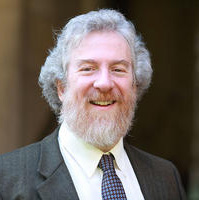
Avodah: In the Service of God
Aug 4, 2012 By Samuel Barth | Commentary
The Hebrew word avodah has a powerful history, embracing domestic service (Jacob for Laban) and enslavement (Israelites in Egypt), as well as ritual, sacrifice, and prayer. Avodah is often translated with the complex and highly ambiguous English word service, which has implications in the United States of military service, servitude, and religious gatherings.
Read More
Our Prayers for Israel—For Whom Is the Message?
Jul 24, 2014 By Samuel Barth | Commentary
A serious challenge confronting the all-too-human venture of praying to God is in working out what we can say to the “One Who knows all.” A prayer for a congregation to recite in the face of destructive storms might open with the words, “God, we stand before you in time of peril”—but if God truly knows all, might we not assume that God is well aware of the peril facing the community?
Read More
Piyyutim: Poetry of the Soul
Jun 12, 2014 By Samuel Barth | Commentary
There is an exquisite irony that the same element of our liturgy—the traditional poems (piyyutim) within the siddur that are used in many of our services—is identified with both the greatest tedium and the most profound spiritual depths. We encounter Adon Olam and Yigdal every day and Lekha Dodi and El Adon every Shabbat. In the cycle of the year, there are the piyyutim for rain and dew (Geshem and Tal) associated with Shemini Atzeret and Pesah; Akdamut for Shavu’ot; and of course numerous poetic compositions adorn the liturgy of the Yamim Nora’im (High Holidays).
Read More
Shema’: The “Secrets” of the Eyes
Jun 6, 2014 By Samuel Barth | Commentary
Much of our liturgy and liturgical experience is verbal and analytic, based upon precisely what words we say and the meaning(s) found and embedded in those words. In these essays, we have also looked extensively at the way in which music, melody, and vocal quality add levels of meaning and experience. However, we are not disembodied minds and souls, and there are more than a few occasions when the disposition of the body is engaged to greater or lesser extent in the experience of liturgy. Most dramatically, we might think of the prostrations on Rosh Hashanah and Yom Kippur, but even in the daily experience, we think naturally of standing for the ‘Amidah, among many other customs and practices.
Read More
Mah Nishtanah . . . A Seder for Yom Ha’atzma’ut
May 16, 2014 By Samuel Barth | Commentary | Yom Hazikaron-Yom Ha'atzma'ut
In recent weeks, Medinat Israel (the State of Israel) was celebrated by citizens, residents, and the worldwide Jewish community with an array of observances for Yom Ha’atzma’ut (Israel Independence Day). In synagogues of the Conservative/Masorti Movement, morning minyan included the Hallel prayer and a special Torah reading, affirming the understanding that the establishment of Israel is not merely an item in the political history of the mid-20th century, but a vital step in the spiritual story of our people and, perhaps, the world. The “Prayer for the State of Israel,” included in the Shabbat morning service in almost all synagogues, speaks of Israel as “reishit tzemichat ge’ulateinu” (the beginning of the flowering of our redemption).“Redemption,” here, must be understood as the Messianic Era of universal peace and understanding.
Read More
Slivers of Memory (Yom Ha-sho’ah V’-ha-gevurah)
May 2, 2014 By Samuel Barth | Commentary | Yom Hashoah
Several decades ago, many ceremonies commemorating the Shoah attempted to tell the entirety of the story, with numbers that defied comprehension and broad-sweeping trends of history that submerged the experience of individuals in the story of a world run amok. In more recent years, I have observed that the experience and testimonies of individuals have become more prominent, perhaps serving as holographic slivers that represent the wider context. As survivors of the Holocaust are fewer in number each year, we turn to the writings, art, songs, and recordings born out of those years.
Read More
Shema’ (Part 1)—What We Know and What We Don’t
Apr 25, 2014 By Samuel Barth | Commentary
Ask almost any group of Jews to identify the most important Jewish “prayer” of all, and at the top of the list will almost certainly be the Shema’. Technically, it is not a prayer, for it is not addressed to God, but to the community of Israel. But that is a technical quibble, so (for now) let it pass. Traditionally, we say the Shema’ twice each day within the formal liturgy, and also just before going to sleep.
Read More
The Song of Songs: Lovers Absent and Present
Apr 18, 2014 By Samuel Barth | Commentary
This Shabbat, Hol Hamo’ed Pesah, we read Shir Hashirim, the Song of Songs, the provocative and enigmatic cycle of lusty love poetry that is embraced (though not without challenge) by the canon of the Hebrew Bible. Dr. Francis Landy of Calgary University wrote a powerful and lyrical treatise on the Song of Songs entitled Paradoxes of Paradise, which opens with the reflection of Rabbi Akiva—“All the Scriptures are kedoshim, holy, but Shir Hashirim kodesh kodashim, the Song of Songs is the Holy of Holies”—radically deploying the term otherwise used to describe the holiest place in the Temple.
Read More


